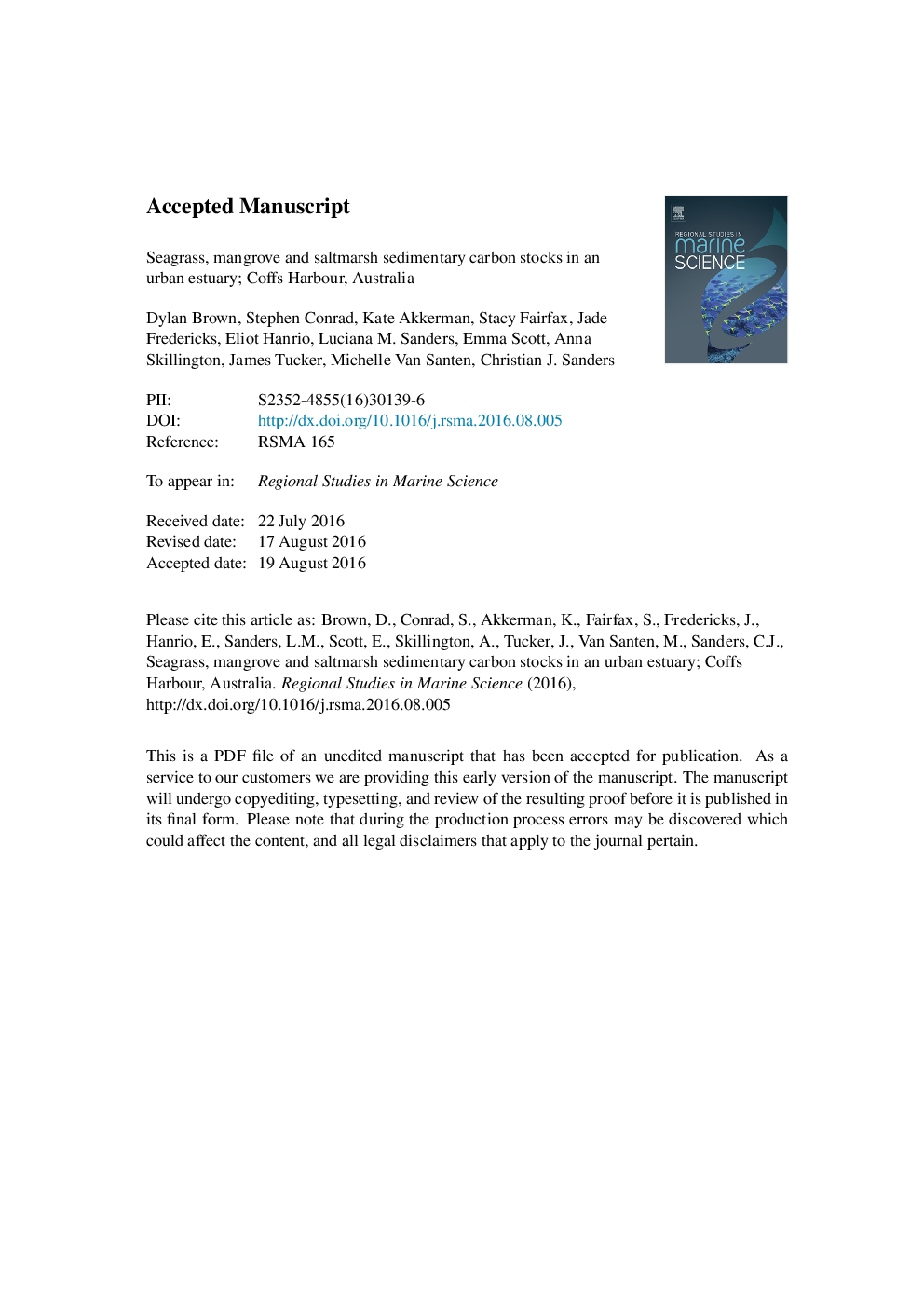| Article ID | Journal | Published Year | Pages | File Type |
|---|---|---|---|---|
| 5758117 | Regional Studies in Marine Science | 2016 | 26 Pages |
Abstract
Coastal vegetation (seagrass, mangrove and saltmarsh) termed “blue carbon” systems have recently been noted for their potentially large carbon storage capacities. This study quantifies sedimentary blue carbon stocks in an urban estuary containing seagrass (Zostera muelleri), mangrove (Avicennia marina), and saltmarsh (Sporobolus virginicus) habitats in the Coffs Creek Estuary (NSW, Australia). The objective of this study is to investigate the carbon storage dynamics, including the evaluation of potential influences from the plant cover and geomorphology. The sediment carbon stock results presented in this work show that mangroves store more carbon, 1070 ± 827 compared to 858 ± 190 and 365 ± 255 Mg haâ1 than saltmarsh and seagrass, respectively. These results are of interest because in Coffs Creek alone, mangroves have expanded (in area) by more than 25% from 1986 to 2011. The large sediment carbon stocks found in this urban system emphasize the benefits of restoring and protecting these ecosystems as a way of offsetting atmospheric carbon dioxide (CO2) emissions.
Related Topics
Physical Sciences and Engineering
Earth and Planetary Sciences
Oceanography
Authors
Dylan R. Brown, Stephen Conrad, Kate Akkerman, Stacy Fairfax, Jade Fredericks, Eliot Hanrio, Luciana M. Sanders, Emma Scott, Anna Skillington, James Tucker, Michelle L. van Santen, Christian J. Sanders,
